
InD20Group
gamer level 2
642 xp
642 xp
followers
17
17
Use my invite URL to register (this will give me kudos)
https://boardgaming.com/register/?invited_by=ind20group
profile badges
...
...
...
...
recent achievements

Novice Reviewer
Review 5 games and receive a total of 140 positive review ratings.
Review 5 games and receive a total of 140 positive review ratings.

Critic - Level 2
Earn Critic XP to level up by completing Critic Quests!
Earn Critic XP to level up by completing Critic Quests!

Judge - Level 2
You be the judge! Demo 5 games at Gen Con. List of participating publishers »
You be the judge! Demo 5 games at Gen Con. List of participating publishers »

Explorer - Level 1
Earn Explorer XP to level up by completing Explorer Quests
Earn Explorer XP to level up by completing Explorer Quests
Player Stats
Critic (lvl 2)
360 xp
360 xp
Explorer (lvl 1)
190 xp
190 xp
Professor (lvl 0)
30 xp
30 xp
Reporter (lvl 0)
70 xp
70 xp
About Me
I am a game reviewer. I always take requests for games that you want reviewed just send me an email at lfettinger@ind20group.com



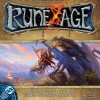



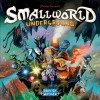









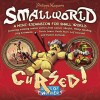







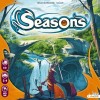
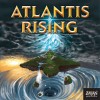
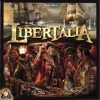







Quarriors!
I was fortunate enough to attend a demo of Quarriors on Saturday night. I played the first game and was then asked to “demo” the second game (it was simple enough to grasp as this was an easy game to learn). My son played in the second game (more on the relevance of this later).
An Overview:
Quarriors is a “Dice Building Game”. That is to say that all the players start with a preset number of identical dice and, through game play, acquire (buy) different, better dice for play. The goal of the game is to acquire Glory. When a player has accumulated enough Glory, predetermined by the number of players, they win the game.
Components:
Please note this was a demo copy and perhaps preproduction insofar as color and quality of the components is concerned. There are dice, lots of dice – 130 in the base game. These are six sided dice. The dice are in groups of 5, each representing a different creature, monster or spell. Each group of five is distinctly different in color. Each die has a variety of symbols- Quiddity (represented by a “tear drop” shape with a number inside it) and/or several different symbols representing the creature, monster or spell that is associated with that die. The symbols vary from each die and there are corresponding data cards for each creature, monster or spell with an explanation of the symbols. In fact, there are three cards for each creature, monster or spell (more later). The artwork is described as “anime” style and is therefore light and cute. There is a small rule book as well. In all fairness I didn’t read it as the explanation during the demo was all that was needed. There are also dice bags, one color for each player to hold the dice in and there is a small colored block (in a color matching the dice bag) for tracking glory of each player. There is also a small 8”x 8” scoring board numbers 1-20 for tracking player’s scores. And last but not least is one of the nicest components – there is the box for all of the above. It easily holds everything with room for more. It is made to look like one of the dice and is metal! Yep, the box is tin (or whatever they are making metal boxes out of these days).
Set up:
Each player is given a colored bag, 12 dice – 8 Quiddity dice and 4 Assistants. Quiddity dice are white with light blue ink and assistants are brown with white ink. The assistant dice are basically light weight creatures. The number of players will determine the glory required to win. Each player’s glory total is placed on the scoring board for tracking. The “board” is then set up with 3 starting spells and the rest of the board by randomly distributing 9 cards for the creatures and monsters and spells. Each player also has a “Monster” card and a “Spell” card for placing monster and spell dice as they are acquired.
Game Play:
Game play consists of clockwise rotation of players. The first player randomly selects 6 dice for their dice bag and rolls them. The player then totals the amount of Quiddity. This total is then used to “purchase” other dice that represent the creatures, monsters and spells. As a player purchases these dice, they are added to their collection (in their used pile). You are allowed to make one purchase with your Quiddity. Play then passes to the next player. As the players run out of dice in their dice bag, their used pile is put back into the bag, thus allowing the player to use the creatures and or spells bought in previous rounds. The creature, monster and spell dice all have different symbols on them. The effect of these is described on the appropriate cards for each creature, monster or spell respectively. As play continues, a player will purchase creatures, monsters and spells. As these are rolled, they may show a symbol other then Quiddity (most if not all the dice show Quiddity on one or more of their sides). These other sides represent the creature, monster or a spell effect. To use a creature/spell effect that has been rolled (i.e., has a symbol showing), a player must spend the appropriate amount of Quiddity to purchase the creature/spell. The cost to do so is on the upper left hand corner of the die (usually 1 or 2 Quiddity). Once purchased, the creature or monster is placed on the players Monster card (or a spell would be placed on the players spell card). The player now has a “monster in play”. At the end of a player’s turn, as determined by spending all the availability Quiddity, the active player’s monster(s) then attack the other player’s monsters clockwise and in turn. Starting with the active (attacking) player, if the player on their left has any creatures in play (on their monster card), they are attacked. Attacking is a simple affair – Compare the attack total shown on the attacking players monster dice (upper right hand corner) with the defense numbers shown on the defending players dice (lower right hand corner). If the attacking monster total is greater than the defending monster(s), then one or more of them will be killed. The defending player may determine the order in which his dice are attacked. This is important as the total attacking value will be reduced by the defenders defense. For example, if player one has a attack total of 8 and the defender and two creatures with defense values of 4 and 5, the defender will determine which of his two monsters will be killed. As the remaining amount is less than the remaining defending monsters defense 8 – 5 = 3 only one of the two will perish. After resolution of this battle, the attack moves onto the next player clockwise and so forth. Defenders cannot attack back. They simply defend. Once this is completed, the next players turn will start (with the rolling of six dice ETC). Scoring occurs when, at the beginning of a players turn, they have a monster on their monster card. When a player does have a monster on their monster card, they will score the appropriate amount of Glory as shown on the card for that monster. Spells are handled differently as they are used to alter the outcome of combat or affect die rolls. They have no Glory value themselves. Once the Glory total has been reached by a player, the game ends and they win.
Observations and thoughts:
If you hate dice games, you will not enjoy this game. Really! It’s all about rolling dice. There is a reroll ability granted by several dice and that should give some of you peace of mind that can roll poorly several times in a row and still suck. For what it’s worth, I believe that the odds of rolling poorly are directly proportional to how funny the result of a poor roll will be.
The quality of the dice is very good. The dice are “engraved” with the images rather than being painted on. This is nice although in some cases you will need to look very closely as some of the numbers are very small (they don’t look exactly like they do on the box). The colors are great and closely match the corresponding data card. They are very different from each other and I think it’s always fun to throw a bunch of different colored dice. I like the “Mighty Ooze” color – Clear Florescent yellow/green. Think antifreeze colored dice.
The dice tin is great. It looks like one of the dice (a Dragon). They choose to print all six sides (inc. the bottom). And during the demo, the active player used the top of the box to roll his or her dice in. Convenient and functional! It’s nice to have something other than a cardboard box to lug a game around in
The box states 30 mins to play and it is right on. We played two, 3 player games and even though we were learning the game, it still about 30 mins or so.
I didn’t like the scoring board. They did the 1-5 and then 10-6, 11-15, 20-16. In other words, the scoring went left to right and then right to left, back and forth in an “S” shape. A minor annoyance, but I guess you would get used to it. But it wasn’t intuitive.
Replay value is HUGE. The set up cards have three different “levels”. When randomly distributed, you have about (inset math here) options. Well a lot of options anyway. Or just choose the dice you want to play with. Either way, you have a random distribution option here for repeated play.
One gross inaccuracy was the suggested age for play- 14+. WHAT! To roll dice? My 9 year old played (against adults) and won. It was speculated that perhaps the dice may be to enticing to younger players due to the tasty colors used. I would think by age 14, one would have outgrown the “looks tasty put in mouth to find out” urge.
I would describe this game as Thunderstone with dice. This is not very helpful if you are not familiar with Thunderstone. And I don’t mean to say it is a knock off of Thunderstone. Rather that the style of play is very similar to Thunderstone. I am a fan of Thunderstone BTW. One thing I do like better about Quarriors is that you are playing against other players and therefore, unlike Thunderstone, you can’t get a bad starting set up with the dungeon. I very much like playing this game. It was a fun, easy and quick. (Did I date someone like that? NM).
In closing, I would recommend this game, even if you hate dice. Why? Well it is just a recommendation after all. It’s not like I can make you go out and buy it. But it is light and fun. A great filler for some, but I think you might find this a great game overall, even for non-gamers. Simple to explain and play and should be enjoyed by one and all.
This evaluation was based on two plays during a demo. There may be inaccuracies. There may be falsehoods. But they are not intentional. Just to be fair, if someone wants to send me a copy for evaluation I will revise my review and be forever thankful.
This review can be found on Boardgamegeek as well.